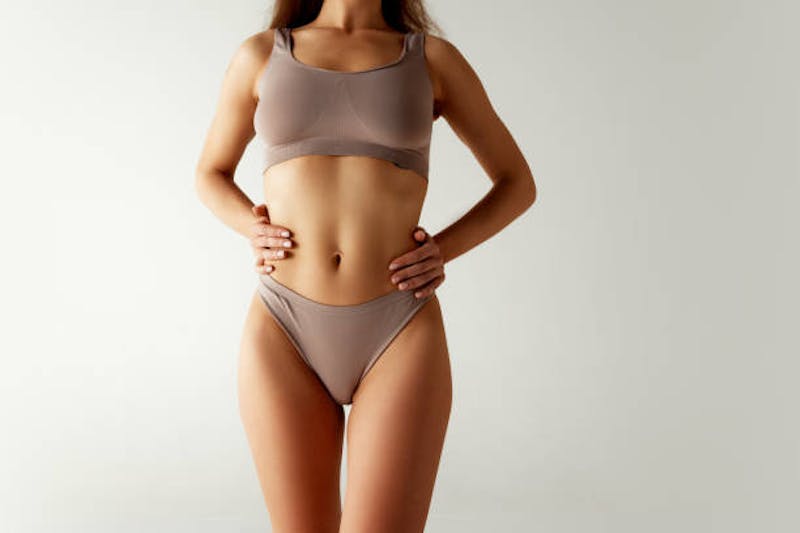
Why Chin Lipo Fails — And the Neck-Contouring Solution Orlando and Melbourne Patients Trust
On 25
Nov
2025
If you're thinking about improving the fullness under your chin or tightening a sagging neck, you’re not alone. The submental (under-the-chin) area is one of the first places where aging becomes visible, and many patients in Central Florida, from Melbourne to Merritt ...
View More
Understanding Panniculectomy: What to Expect from This Life-Changing Procedure
On 11
Nov
2025
For many people who have lost a significant amount of weight, whether through lifestyle changes, GLP-1 agonists, or bariatric surgery, excess skin and fat can remain as an unwelcome reminder of the past. This loose, hanging tissue around the lower abdomen, called a pannus or apro...
View More
Facial Rebalancing vs. Liquid Facelift: Understanding the Differences
On 13
Oct
2025
As facial rejuvenation continues to evolve, patients often hear new terms like “facial rebalancing” and “liquid facelift. ” While they share similarities, they are distinct approaches to non-surgical facial enhancement. Understanding the difference can help...
View More
The 4 Types of Tummy Tucks
On 30
Sep
2025
For many people, the midsection is one of the most challenging areas to reshape through diet and exercise alone. Whether it's the effects of pregnancy, significant weight changes, or the natural aging process, the abdomen often shows stretched skin, weakened muscles, and st...
View More
The Endonasal Lip Lift: What It Is, How It Works, and What to Expect
On 30
Sep
2025
When it comes to facial aesthetics, the lips play a starring role. A youthful upper lip has a gentle curve, balanced proportions, and just the right amount of tooth show when you smile. Over time—or simply due to genetics—the upper lip can lengthen and flatten, making...
View More
Discover Orlando Through the Eyes (and Palate) of Dr. Clevens: 5 Must-Try Restaurants for Foodies
On 21
Aug
2025
At Clevens Face and Body Specialists, we believe that excellence lies in the details—whether it's the refined artistry of facial plastic surgery or the perfectly balanced flavors of an exceptional meal. That’s why our founder, Dr. Ross Clevens, isn’t just ...
View More
Why Sunscreen Should Be a Daily Essential — Especially After Facial Surgery
On 23
Jul
2025
Sunscreen Protects Your Skin from UV Damage The sun's rays can cause cellular damage that builds up over time, increasing your risk for skin cancers such as basal cell carcinoma, squamous cell carcinoma, and melanoma. Daily application of a broad-spectrum sunscreen with SPF...
View More
What No One Tells You About Losing Weight: Plastic Surgery Procedures for Massive Weight Loss Patients
On 08
Jul
2025
By Board Certified Plastic Surgeon Christopher Hess, MD, FACS Losing a significant amount of weight—whether through bariatric surgery, medical weight loss programs, or sheer determination—is a life-changing achievement. It transforms your health, mobility, and confide...
View More
What to Ask During Your Consultation for a Breast Augmentation
On 23
Jun
2025
If you're considering breast augmentation, you're not alone. It's one of the most popular cosmetic procedures in the world, known for enhancing confidence and helping women feel more comfortable in their bodies. But before scheduling surgery, your first — and arguably most ...
View More
6 Secrets to Supercharge Your Skincare Routine This Summer
On 11
Jun
2025
Longer days, beach getaways, sun-kissed selfies. . . Summer is here — and so are the skincare challenges that come with it. From extra sun exposure and sweat to clogged pores and dehydration, your skin has a lot to deal with this season. The good news? A few smart adjustments...
View More
Necklift Secrets: The Art of Neck and Jawline Rejuvenation
On 15
May
2025
By Ross A. Clevens, MD, FACSFounder & Medical Director, Clevens Face and Body SpecialistsDouble Board Certified Facial Plastic Surgeon When it comes to facial aging, the neck often tells the story long before the face does. While many patients initially focus on facial lines ...
View More
Facelift or Mini-Facelift: Which Is Right for You?
On 22
Apr
2025
As we age, it's natural for our skin to lose elasticity, facial volume to diminish, and wrinkles to deepen. These changes can affect how we feel about our appearance and lead many to consider cosmetic procedures to regain a more youthful, refreshed look. Two of the most pop...
View More
